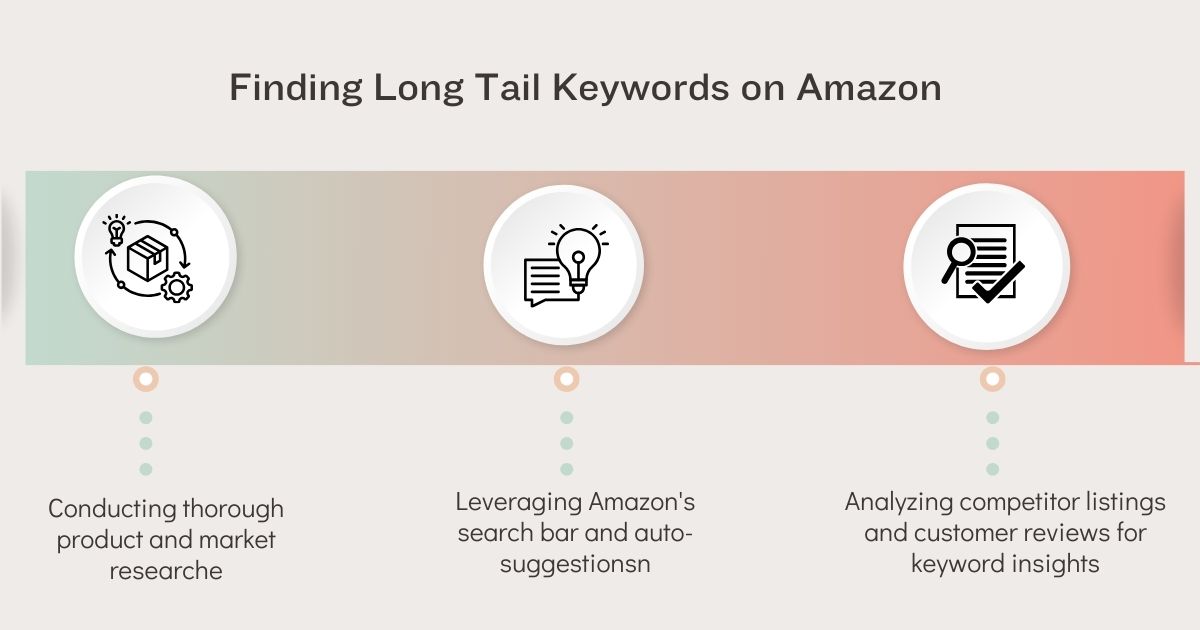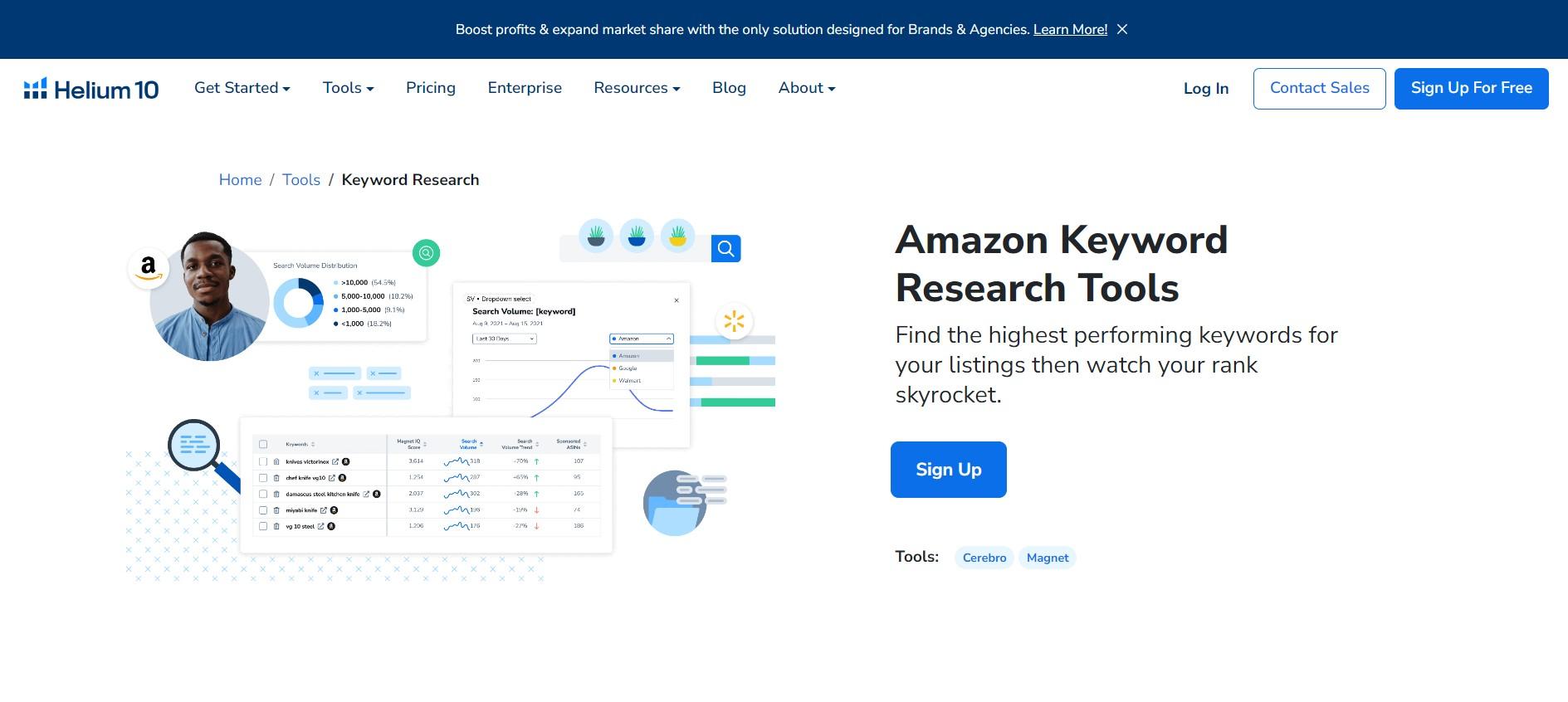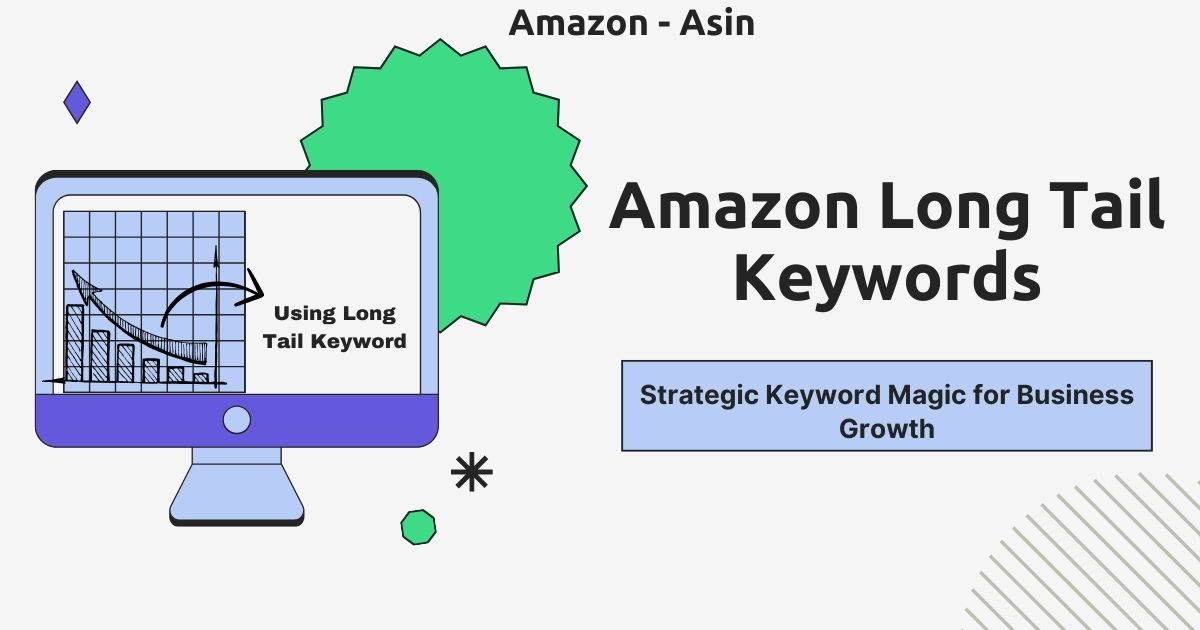Are you an e-commerce business owner struggling to drive traffic and increase sales on Amazon? If so, it’s time to tap into the power of long tail keywords. Unleashing Amazon long tail keywords can be a game-changer for your e-commerce success.
Long tail keywords are specific and detailed phrases that target a niche audience. They may have lower search volumes than generic keywords but often have higher conversion rates. Using long tail keywords effectively can attract highly targeted traffic to your Amazon listings and boost your sales.
This article will explore the importance of long tail keywords for your Amazon e-commerce business. We will discuss identifying relevant long tail keywords, optimizing your product listings with them, and driving organic traffic to your Amazon listings.
Don’t be left behind in the competitive world of e-commerce. Discover how leveraging Amazon’s long tail keywords can give your business a substantial edge. Get ready to unlock a world of potential for your e-commerce success on Amazon.
A quick peek into the article:
- What are Amazon Long Tail Keywords?
- Understanding the Importance of Long Tail Keywords for Amazon
- Benefits of Using Long Tail Keywords for Amazon
- How to Find Long Tail Keywords on Amazon
- Tools to Help You Find Amazon Long Tail Keywords
- Strategies for Using Long Tail Keywords on Amazon
- Optimizing Product Listings with Long Tail Keywords on Amazon
- Best Practices for Using Long Tail Keywords on Amazon
- Final Thoughts
What are Amazon Long Tail Keywords?
In Amazon , long tail keywords refer to highly specific phrases or combinations of words that cater to niche and detailed customer searches. Unlike broad and general keywords, which fall under short-tail keywords, long tail keywords offer a more targeted approach to product visibility. Understanding the unique context of Amazon is crucial to appreciating how long tail keywords can be harnessed for maximum impact.
Contrasting short-tail and long-tail keywords
The distinction between short-tail and long-tail keywords lies in their scope and specificity. Short-tail keywords are typically shorter, more generic phrases encompassing a broad range of products. While they may attract a larger audience, they often face higher competition. Long tail keywords, on the other hand, are longer and more detailed, honing in on specific attributes, features, or use cases. This specificity reduces competition and, in turn, allows sellers to reach a more targeted audience.
Examples of Amazon long tail keywords
To illustrate the concept, consider the difference between a short-tail keyword like “running shoes” and a long tail keyword like “women’s trail running shoes with arch support.” The former is broad, casting a wide net and potentially attracting users with varied intentions. The latter, however, is more specific and caters to a particular market segment—women needing trail running shoes with specific support features. Amazon long tail keywords thrive on this specificity, helping sellers connect with customers closer to making a purchase decision.
Examples of Amazon long tail keywords may include:
- “Stainless steel kitchen knife set with wooden handle.”
- “Organic hypoallergenic dog shampoo for sensitive skin”
- “Outdoor solar-powered LED string lights for garden decor”
Understanding the Importance of Long Tail Keywords for Amazon
The impact of long tail keywords on search engine algorithms
The dynamic algorithms that power search engines, including Amazon’s, are designed to deliver the most relevant results to users. Long tail keywords play a pivotal role in this equation by providing a level of specificity that aligns closely with user intent. Search engines recognize the detailed nature of long tail keywords. As a result, products optimized with these phrases are more likely to be deemed relevant, consequently enjoying higher placement in search results. Understanding and leveraging this impact is key to unlocking the full potential of Amazon long tail keywords.
Increased relevance and specificity in user searches
One of the primary advantages of long tail keywords is their ability to mirror how users express their needs in search queries. Customers are increasingly adept at formulating detailed and specific search terms to find precisely what they want. Long tail keywords facilitate this process by aligning with the nuances of user searches, making products more discoverable to an audience actively seeking those attributes. Focusing on specificity and relevance can help sellers improve user experience overall and boost conversion rates.
Conversion rate advantages of targeting long tail keywords on Amazon
The journey from product discovery to purchase is a critical aspect of e-commerce, and long tail keywords prove instrumental in this process. Users who employ detailed search queries are often closer to purchasing. As such, when sellers strategically incorporate long tail keywords into their product listings, they tap into a pool of customers with higher purchase intent. This boosts conversion rates and contributes to a more efficient use of advertising budgets, as there is a greater chance that the traffic will result in purchases.
Benefits of Using Long Tail Keywords for Amazon
Enhanced visibility in Amazon search results
The primary goal of any Amazon seller is to ensure their products are featured in search results, and long tail keywords are a powerful tool for achieving this objective. By targeting specific phrases that align with user intent, sellers can enhance the visibility of their products in search results.
Lower competition for long tail keywords
In the vast landscape of Amazon, the battle for visibility is intense, particularly for generic, high-traffic short-tail keywords. With their specific and niche focus, long tail keywords present an opportunity for sellers to bypass the fierce competition associated with broader terms.
Improved conversion rates and customer satisfaction
Long tail keywords attract a more targeted audience and contribute to higher conversion rates. Users who search with detailed and specific queries are often further along in the purchasing journey. By aligning product listings with these specific needs, sellers create a seamless experience for potential customers.
Building a more targeted and loyal customer base
The cumulative effect of employing long tail keywords is gradually constructing a more targeted and loyal customer base. By consistently delivering products that align with specific customer needs, sellers can cultivate a following of satisfied buyers. This targeted approach leads to repeat business and encourages word-of-mouth marketing as satisfied customers share their positive experiences with others.
How to Find Long Tail Keywords on Amazon

Conducting thorough product and market research
Before delving into the specifics of long tail keywords, conducting thorough product and market research is crucial. Understand your target audience, their preferences, and the unique features of your products. Identify key attributes, use cases, and distinctive qualities that set your products apart. This foundational research forms the basis for uncovering long tail keywords that resonate with potential customers.
Leveraging Amazon’s search bar and auto-suggestions
Amazon’s search bar is a treasure trove of insights into user intent. Begin your keyword discovery journey by typing relevant terms into the search bar. Take note of the auto-suggestions that appear as you type—these are often long tail keywords based on real user searches. The autocomplete feature reflects popular and frequently searched phrases, providing valuable clues about the language your target audience uses. Incorporate these suggestions into your product listings to align with user expectations and improve discoverability.
Analyzing competitor listings and customer reviews for keyword insights
Your competitors and their customer reviews offer a wealth of information about the market landscape. Analyze the product listings of successful competitors within your niche. Identify the keywords they emphasize and the language they use to highlight product features. Additionally, delve into customer reviews for insights into customers’ specific phrases when describing their needs or experiences with similar products. By understanding the language of satisfied customers, you can incorporate these terms into your listings to attract a similar audience.
Tools to Help You Find Amazon Long Tail Keywords
Amazon Keyword Tool (Seller Central):
- Overview: Amazon provides a native Keyword Tool within Seller Central, offering direct insights into customer search terms and their performance.
- Benefits: Real-time data from the Amazon platform, integration with Seller Central, and precise insights into customer search behavior.
SellerApp:

Overview: SellerApp is a third-party tool tailored for Amazon that provides comprehensive keyword research features. It offers insights into search volume, competition, and trends.
Benefits: Holistic keyword analysis, competitor tracking, and trend identification for strategic planning.
MerchantWords:

Overview: MerchantWords is renowned for its extensive Amazon keyword database. It aids sellers in uncovering long tail keywords by offering insights into search volume and related terms.
Benefits: Vast keyword database, trend analysis, and relevance to Amazon’s unique ecosystem.
Helium 10:

Overview: Helium 10 is a versatile tool suite encompassing various Amazon seller solutions, including keyword research. It provides insights into search volume, competition, and historical trends.
Benefits: All-in-one platform, precision in keyword research, and integration with other essential seller tools.
Strategies for Using Long Tail Keywords on Amazon
Incorporating Keywords into Product Titles, Descriptions, and Bullet Points
Product Titles:
Long tail keywords should be naturally integrated into your product titles to maximize visibility. Craft titles that are both keyword-rich and compelling to potential buyers. Ensure the most important and relevant long tail keywords are placed prominently within the title.
Product Descriptions:
Elaborate on the features and benefits of your products in the product description, naturally incorporating long tail keywords. Provide detailed information that aligns with the specific search queries of your target audience. Aim for a balance between keyword optimization and informative content.
Bullet Points:
Use Amazon bullet points to highlight key product features and details. This is an excellent opportunity to insert long tail keywords in a scannable format. Focus on addressing the unique aspects customers searching with long tail queries are likely interested in.
Utilizing Backend Search Terms Effectively
Backend Keywords:
Amazon allows sellers to input backend search terms that are not visible to customers but play a vital role in search ranking. Use this section to include additional long tail keywords relevant to your product. Ensure that you avoid redundancy with terms already used in your product listing.
Synonyms and Variations:
Include synonyms and variations of your primary long tail keywords in the backend. This expands the reach of your product, capturing a broader audience without sacrificing specificity.
Avoid Keyword Stuffing:
It is crucial to incorporate relevant keywords without resorting to keyword stuffing, as excessive use can have adverse effects on your search ranking. Concentrate on delivering valuable and meaningful content instead.
Creating Targeted and Relevant Ad Campaigns
Keyword-Driven Ad Campaigns:
Leverage Amazon’s advertising platform to create targeted campaigns based on your identified long tail keywords. Use Sponsored Products or Sponsored Brands campaigns to increase visibility for specific products.
Exact Match Campaigns:
Implement exact match campaigns for your most important long tail keywords. This ensures that your ads are displayed when users search for the terms you’ve identified as high-priority.
Monitor and Adjust:
Regularly monitor the performance of your ad campaigns and adjust your strategy based on the data. Identify which long-tail keywords drive the most conversions and allocate your budget accordingly.
Optimizing Product Listings with Long Tail Keywords on Amazon
Keyword Research:
Conduct thorough long tail keyword research using tools like SEMrush, Ahrefs, and Amazon’s Keyword Tool. Identify relevant keywords that are in sync with your product and strike a balance between search volume and competition.
Incorporate Keywords into Titles:
Craft a compelling product title that includes your primary long tail keyword. Ensure it is descriptive, enticing, and communicates the unique selling points of your product. Place the most crucial keywords towards the beginning of the title.
Optimize Bullet Points:
Utilize bullet points to briefly showcase key features and benefits. Insert long-tail keywords within these bullet points to cater to search algorithms and potential customers.
Enhance Product Descriptions:
Elaborate on the product’s features and advantages in the description section. While incorporating long tail keywords, maintain a narrative flow that guides potential buyers through the unique aspects of your product. Avoid keyword stuffing and focus on providing valuable information.
Backend Search Terms:
Leverage the backend search terms section to include additional long tail keywords that might not fit into the visible portions of your listing. Ensure these terms are relevant, specific, and not repetitive.
Optimize Images and Videos:
Include high-quality images and, if applicable, videos that showcase your product in action. While Amazon’s algorithm may not directly interpret visuals, a visually appealing listing can enhance the overall user experience, which could result in increased conversion rates.
Utilize A+ Content (Enhanced Brand Content):
If you have access to A+ Content, use it to create visually appealing and informative content that complements your product listing. This allows you to elaborate further on your brand story, features, and benefits using additional long tail keywords.
Monitor and Iterate:
- Monitor important metrics like click-through rates, conversion rates, and sales performance. Iterate your strategy based on the data, refining your long tail keyword usage for continual improvement.
Importance of Maintaining a Natural and User-Friendly Product Description
User Experience is Key:
While optimization is crucial, always prioritize the user experience. A natural and user-friendly product description enhances readability and ensures potential buyers can easily grasp your product’s value.
Avoid Keyword Stuffing:
Resist the temptation to excessively insert keywords to the point of disrupting the flow of your content. Keyword stuffing not only hampers readability but can also have a negative impact on search rankings.
Craft Compelling Copy:
Focus on creating copy that resonates with your target audience. Use language that speaks directly to the benefits of your product and how it addresses the specific needs of customers using long-tail keywords seamlessly.
Best Practices for Using Long Tail Keywords on Amazon
Regularly Updating and Refining Keyword Strategy
Stay Agile with Market Trends:
E-commerce is dynamic, and consumer preferences evolve. Regularly update your long tail keyword strategy to align with changing market trends, seasonal demands, and emerging product features.
Monitor Competitor Strategies:
Monitor your competitors and their keyword strategies. Identify new keywords they may be targeting and assess the effectiveness of their approaches. This ongoing analysis can provide insights for refining your strategy.
Adapt to Customer Feedback:
Act on customer feedback, reviews, and inquiries. Customer insights can reveal new long tail keywords or highlight specific features that resonate with your audience. Use this information to refine your keyword strategy and product listings.
Monitoring and Analyzing Performance Metrics
Key Metrics to Track:
Regularly monitor key performance metrics, including click-through rates (CTR), conversion rates, and sales. Analyze which long tail keywords are driving the most engagement and conversions. Tools like Amazon’s Seller Central and third-party analytics platforms can aid this analysis.
Evaluate Customer Search Terms:
Review customer search terms reports provided by Amazon. Analyze the actual terms customers are using to find and purchase your products. This data can uncover hidden gems and inform adjustments to your long tail keyword strategy.
Final Thoughts
In the vast landscape of Amazon, the judicious use of long tail keywords emerges as a linchpin for success. Through meticulous placement in product titles, descriptions, and backend search terms, sellers can enhance discoverability and align with customer intent. A seller can craft a resilient strategy by leveraging powerful tools such as SellerApp and staying vigilant about performance metrics and market dynamics.
Long tail keywords cease to be mere tools—they transform into strategic assets. These assets drive visibility and resonate with the audience, fostering sustained growth. The journey on Amazon is dynamic, and in this dynamism lies the opportunity to adapt, optimize, and elevate your products to unprecedented heights. As you navigate this terrain, remember: long tail keywords aren’t just a means; they are the pathway to triumph in the competitive world of e-commerce.




